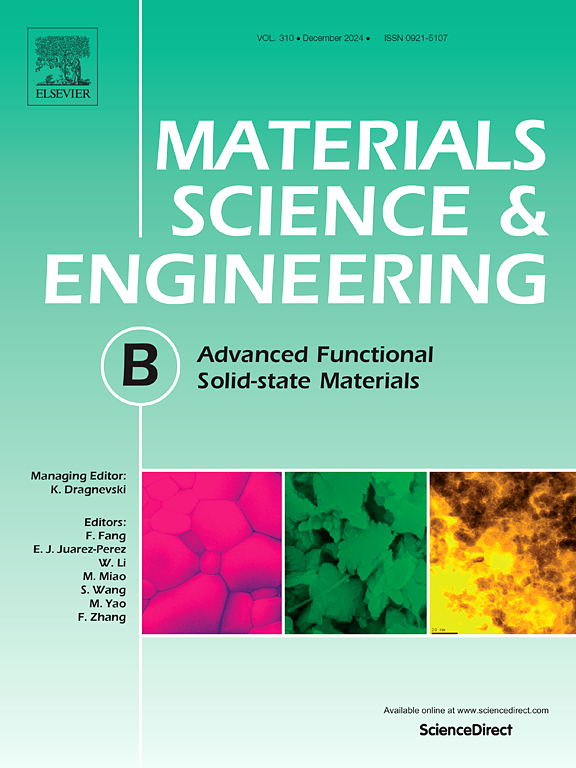MoO3/MoS2 based nanocomposite electrodes with ultrahigh performance and excellent cyclic stability for supercapacitor application
IF 4.6
3区 材料科学
Q2 MATERIALS SCIENCE, MULTIDISCIPLINARY
引用次数: 0
Abstract
In the present work, a MoO3/MoS2 nanocomposite (NC) based electrode has been fabricated and its cyclic stability, Coulombic efficiency, retention in non-redox (6 M NaOH) as well as redox-additive (6 M NaOH + 0.35 M [K4(Fe(CN)6)].3H2O) electrolyte (RAE) has been investigated in the three-electrode system. The XRD analysis of MoO3/MoS2 NC reveals that MoO3 and MoS2 are in orthorhombic phase and hexagonal phase respectively. SEM displays the sheet-like morphology of MoO3 as well as MoS2. BET analysis confirms the formation of the mesoporous nature of the fabricated NC electrode with an average pore diameter of 20.9 nm while XPS confirms the presence of O, S, and Mo in the fabricated NC electrode. The prepared NC electrode exhibits battery-like behavior with an ultrahigh specific capacity (Cs) of 3607.49C/g in the presence of RAE at a current density of 6 A/g. Further, the NC electrode could retain about 112.5 % of its initial Cs at an ultra-high current density of 100 A/g even after 4000 repeated cycles of operation which makes it a potential candidate for energy storage devices.

基于MoO3/MoS2的纳米复合电极具有超高性能和优异的循环稳定性,可用于超级电容器
本文制备了一种基于MoO3/MoS2纳米复合材料(NC)的电极,并在三电极体系中研究了其循环稳定性、库仑效率、在非氧化还原(6m NaOH)和氧化还原添加剂(6m NaOH + 0.35 M [K4(Fe(CN)6)]. 3h2o)电解质(RAE)中的保留率。MoO3/MoS2 NC的XRD分析表明,MoO3和MoS2分别为正交相和六方相。SEM显示了MoO3和MoS2的片状形貌。BET分析证实了所制备的NC电极具有介孔性质,平均孔径为20.9 nm, XPS分析证实了所制备的NC电极中存在O、S和Mo。在RAE存在下,在6 a /g电流密度下,所制备的NC电极具有类似电池的性能,具有3607.49C/g的超高比容量(Cs)。此外,在100 A/g的超高电流密度下,即使经过4000次重复操作,NC电极也能保持约112.5%的初始Cs,这使其成为储能装置的潜在候选者。
本文章由计算机程序翻译,如有差异,请以英文原文为准。
求助全文
约1分钟内获得全文
求助全文
来源期刊

Materials Science and Engineering: B
工程技术-材料科学:综合
CiteScore
5.60
自引率
2.80%
发文量
481
审稿时长
3.5 months
期刊介绍:
The journal provides an international medium for the publication of theoretical and experimental studies and reviews related to the electronic, electrochemical, ionic, magnetic, optical, and biosensing properties of solid state materials in bulk, thin film and particulate forms. Papers dealing with synthesis, processing, characterization, structure, physical properties and computational aspects of nano-crystalline, crystalline, amorphous and glassy forms of ceramics, semiconductors, layered insertion compounds, low-dimensional compounds and systems, fast-ion conductors, polymers and dielectrics are viewed as suitable for publication. Articles focused on nano-structured aspects of these advanced solid-state materials will also be considered suitable.
 求助内容:
求助内容: 应助结果提醒方式:
应助结果提醒方式:


